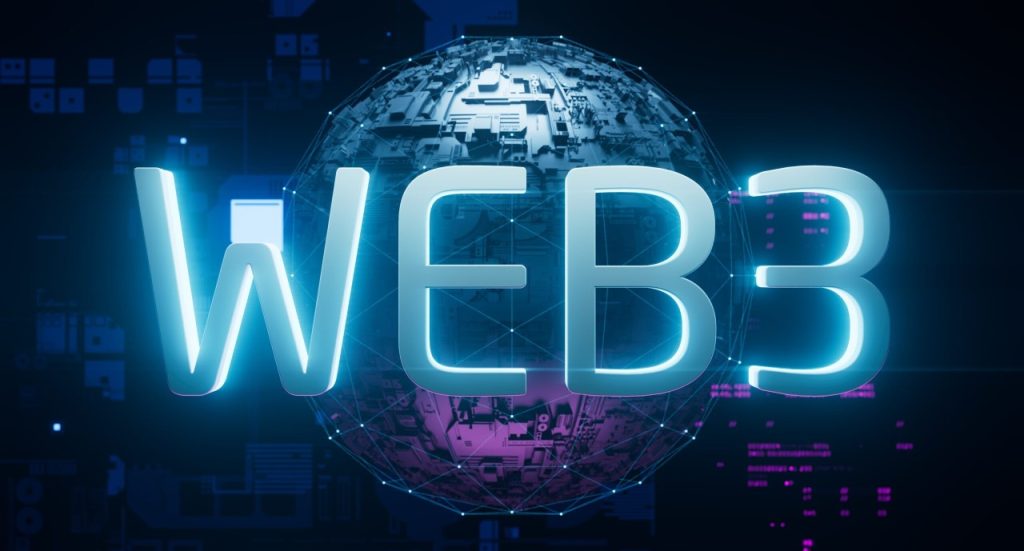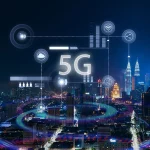The internet is currently undergoing a fundamental transformation, driven by the rise of Web3. This new iteration of the internet promises to break away from the limitations of Web2, the current version of the web, by embracing decentralized technologies like blockchain. This shift offers profound changes in how we interact with the digital world, giving rise to greater transparency, security, and user control. In this article, we will explore what Web3 is, how it is changing the way we use the internet, and what its evolution could mean for the future of online spaces.
What is Web3?
Web3, also known as the decentralized web, represents the next phase in the evolution of the internet. Built upon blockchain technology, Web3 creates an internet that is more user-centric and transparent, giving individuals the power to control their data and online experiences. Unlike Web2, where large centralized corporations control vast amounts of data and dictate how we interact with the internet, Web3 enables a more open and decentralized structure where control is distributed among the users themselves.
At the heart of Web3 is the idea of decentralization. Instead of relying on central authorities or intermediaries like banks, social media platforms, or search engines, Web3 allows individuals to participate in an internet that is owned and operated by the collective. This fundamental shift has the potential to radically change everything from how we communicate to how we manage our finances and digital identities.
Key Features of Web3
Web3 comes with several key features that distinguish it from its predecessors. These features promise to reshape the way users interact with the internet and provide new opportunities for both individuals and businesses.
1. Decentralization
One of the primary features of Web3 is decentralization. Unlike Web2, where data and control are concentrated in the hands of a few powerful companies, Web3 operates on a peer-to-peer network. This means that there is no central authority controlling the flow of information, and instead, decisions are made collectively by a network of users. This peer-to-peer structure eliminates the need for intermediaries and allows for a more open and transparent internet.
Decentralization also enhances privacy and security, as data is distributed across many nodes, making it much harder for hackers or malicious actors to compromise the system. Users can interact directly with each other, with the blockchain acting as a transparent and immutable ledger that ensures the integrity of transactions.
2. Transparency
Another defining characteristic of Web3 is transparency. Every transaction or interaction that occurs on a blockchain is publicly verifiable and recorded in a transparent ledger. This level of transparency builds trust among users, as it allows anyone to verify the authenticity and integrity of data in real-time.
In Web3, users have full visibility into how their data is being used and can track transactions without the need for third-party verification. This transparency is especially important in fields such as finance, where trust is critical, but it can also extend to other areas like supply chain management, voting systems, and even social media, where transparency can help prevent misinformation and censorship.
3. User Ownership
Perhaps the most revolutionary aspect of Web3 is the concept of user ownership. In Web2, users are often the product, with their personal data being collected, sold, and used by companies for profit. In contrast, Web3 empowers users by giving them full control over their digital assets and personal information.
Through blockchain technology, users can own and manage their data and assets without relying on a centralized service. This shift to user ownership means that individuals can monetize their content, control how their information is shared, and even participate in governance decisions that affect the platforms they use. In Web3, users are no longer passive participants—they are active owners and stakeholders in the digital economy.
Applications of Web3
Web3 has a wide range of applications that extend beyond just decentralizing the web. These applications are already beginning to transform industries such as finance, entertainment, and governance, and they have the potential to revolutionize how we live and work online.
1. Decentralized Finance (DeFi)
One of the most prominent applications of Web3 is in the realm of decentralized finance (DeFi). DeFi platforms leverage blockchain technology to create decentralized alternatives to traditional banking services. These platforms enable users to borrow, lend, trade, and earn interest on their assets without the need for intermediaries like banks.
By removing intermediaries, DeFi has the potential to lower costs, increase access to financial services, and create more inclusive economic opportunities, especially for individuals in underserved or unbanked regions. DeFi also enables greater transparency in financial transactions, as blockchain records every action in a public ledger, ensuring that all parties involved can verify and trust the transaction process.
2. Non-Fungible Tokens (NFTs)
Non-fungible tokens (NFTs) are another key application of Web3 that has garnered significant attention. NFTs are unique digital assets that represent ownership of a specific item, such as digital art, music, videos, and even virtual real estate. Each NFT is stored on a blockchain, making it verifiable, secure, and transferable.
NFTs provide a new way for creators to monetize their work directly, bypassing traditional intermediaries like galleries, record labels, or publishers. This has opened up new opportunities for artists and content creators, allowing them to retain ownership and control over their creations. NFTs also enable new forms of digital collectibles and gaming, where users can trade and invest in rare, digital items.
3. Decentralized Autonomous Organizations (DAOs)
Decentralized Autonomous Organizations (DAOs) are community-driven organizations that operate without a centralized leadership structure. DAOs are governed by smart contracts and run on blockchain technology, allowing for transparent decision-making and participation from all stakeholders.
In a DAO, decisions are made through a voting system where token holders have a say in the direction of the organization. This decentralized governance structure allows for more democratic decision-making and greater accountability. DAOs have already been used for various purposes, such as funding decentralized projects, managing online communities, and even overseeing charitable initiatives.
Challenges of Web3
While Web3 offers many promising benefits, it also faces several challenges that need to be addressed before it can achieve widespread adoption. Some of the key challenges include scalability, regulatory uncertainty, and user adoption.
1. Scalability
One of the biggest challenges facing Web3 is scalability. As more users interact with decentralized applications (dApps) and blockchain-based systems, the underlying infrastructure must be able to handle the increased demand. Current blockchain networks, such as Ethereum, face challenges with transaction speed and high gas fees, which can hinder the scalability of Web3 applications.
In response to these challenges, developers are working on solutions such as layer 2 protocols and sharding to increase the throughput of blockchain networks and reduce transaction costs. These solutions will be crucial for making Web3 more accessible and practical for everyday use.
2. Regulatory Uncertainty
Another significant hurdle for Web3 is regulatory uncertainty. Since Web3 operates outside of traditional centralized structures, it raises questions about how governments will regulate decentralized platforms and cryptocurrencies. Issues such as taxation, privacy laws, and intellectual property rights need to be addressed to ensure that Web3 can function within existing legal frameworks.
As Web3 continues to gain traction, regulators around the world will need to develop new rules and policies that balance innovation with the need for security and compliance. This regulatory clarity will be crucial for fostering mainstream adoption and attracting institutional investment in the Web3 space.
3. User Adoption
Finally, user adoption remains a challenge for Web3. While the technology has the potential to revolutionize the internet, many users are still unfamiliar with decentralized systems and blockchain. The user experience for interacting with Web3 platforms can also be more complex compared to traditional web applications, requiring a higher level of technical knowledge.
To overcome this barrier, developers will need to create more user-friendly interfaces and tools that make it easier for people to interact with Web3 technologies. As the technology matures and becomes more intuitive, user adoption is expected to increase, bringing Web3 closer to mainstream use.
The Future of Web3
Despite these challenges, the future of Web3 is incredibly promising. We are still in the early stages of its development, but the potential for Web3 to reshape the internet is immense. In the coming years, we can expect to see more innovative applications of Web3, from decentralized social media platforms to blockchain-based voting systems, and even fully decentralized virtual worlds.
As the technology matures and the barriers to adoption are reduced, Web3 has the potential to create a more equitable and transparent internet. By empowering users to take control of their data and digital assets, Web3 can foster a more open, decentralized, and user-centric online ecosystem.
In 2024 and beyond, we can expect Web3 to continue evolving, with more businesses, individuals, and governments embracing decentralized technologies. Whether it’s through decentralized finance, NFTs, DAOs, or other applications, Web3 is poised to play a central role in shaping the future of the internet. As it grows and matures, it has the potential to create a more secure, transparent, and user-controlled digital world.



